Exploring the Depths: How Deep Would You Have to Drill to Reach the Center of the Earth?

Have you ever wondered what lies at the core of our planet? The Earth’s core is a mysterious and intriguing place, but reaching it is no easy feat. The center of the Earth is approximately 6,371 kilometers below the Earth’s surface, and to get there, one would need to drill through layers of rock and magma.
The journey to the center of the Earth is a challenging one. As we drill deeper, the temperature and pressure increase dramatically. It is estimated that at the Earth’s core, temperatures reach as high as 5,500 degrees Celsius, hotter than the surface of the sun. The pressure at the core is also immense, with estimates ranging from 3.6 to 6.3 million times the pressure at the Earth’s surface.
Scientists have made significant progress in understanding the Earth’s interior by studying seismic waves and conducting experiments in the laboratory. However, we have only scratched the surface of what lies beneath. Deep drilling projects, such as the Kola Superdeep Borehole in Russia, have reached depths of over 7.5 miles (12 kilometers), but this is only a tiny fraction of the distance to the center of the Earth.
Drilling to the center of the Earth remains a dream for now, but it is a dream that continues to capture the imaginations of scientists and explorers alike. The knowledge and insights we could gain from such a journey could revolutionize our understanding of the Earth and reshape our scientific theories.
While reaching the center of the Earth may be impossible with current technology, it is nevertheless an intriguing concept to ponder. The depths of our planet hold many secrets, and as technology advances, who knows what discoveries may lie in store for future generations of explorers.
Understanding Earth’s Layers
The Crust
The Earth’s crust is the outermost layer of the planet. It is the thinnest layer, making up only about 1% of Earth’s total volume. The crust is divided into two types: continental crust and oceanic crust. Continental crust is thicker and less dense than oceanic crust, and it is primarily made up of granite rocks. Oceanic crust, on the other hand, is thinner and denser, consisting mainly of basalt rocks. The crust is where we live and where most geological activity, such as earthquakes and volcanic eruptions, occur.
The Mantle
Beneath the crust lies the mantle, which is the largest layer of the Earth. The mantle is divided into two parts: the upper mantle and the lower mantle. The upper mantle is made up of solid rock, but it is capable of flowing like a very thick liquid over long periods of time. This convection movement in the upper mantle is thought to drive plate tectonics, which is the movement of the Earth’s crustal plates. The lower mantle is more solid and rigid in nature.
The Core
The Earth’s core is located at the center of the planet. It is divided into two distinct parts: the outer core and the inner core. The outer core is liquid, primarily made up of iron and nickel. The inner core, on the other hand, is solid due to the immense pressure at the center of the Earth. The core is responsible for generating Earth’s magnetic field through the movement of molten metal in the outer core. It also plays a role in regulating the planet’s temperature.
| Layer | Description |
|---|---|
| Crust | Outermost layer made up of continental and oceanic crust |
| Mantle | Largest layer divided into upper and lower mantle |
| Core | Located at the center of the Earth, divided into outer and inner core |
In conclusion, the Earth is composed of three main layers: the crust, the mantle, and the core. Each layer has its own unique characteristics and plays a crucial role in shaping the planet and supporting life. Understanding these layers is important for understanding the dynamics and processes that occur within the Earth.
The Moho Discontinuity: The First Challenge
The first major obstacle scientists encounter when drilling into the Earth is known as the Moho discontinuity. This boundary, also called the Mohorovičić discontinuity or simply the Moho, separates the Earth’s crust from the underlying mantle. The Moho represents a substantial change in the composition and physical properties of the Earth’s interior, making it a critical milestone in any attempt to reach the center of the Earth.
The Moho discontinuity was discovered in 1909 by Croatian seismologist Andrija Mohorovičić, who noticed a sudden change in seismic wave velocities at a depth of approximately 35 kilometers (22 miles) beneath the Earth’s surface. This abrupt change in seismic velocities indicates a transition from the Earth’s crust to the underlying mantle, which has different chemical and physical characteristics.
The Composition of the Earth’s Crust
The Earth’s crust is the outermost layer of the planet and is composed primarily of solid rocks and minerals. It is divided into two main types: the continental crust and the oceanic crust. The continental crust is thicker and less dense than the oceanic crust, primarily consisting of granitic rocks. In contrast, the oceanic crust is thinner and denser, mainly composed of basaltic rocks.
The thickness of the Earth’s crust can vary significantly, ranging from approximately 20 to 70 kilometers (12 to 43 miles). However, on average, it is estimated to be around 40 kilometers (25 miles) thick beneath the continents and about 5 kilometers (3 miles) thick beneath the ocean floor.
The Transition at the Moho Discontinuity
As drilling attempts approach the Moho discontinuity, they face the challenge of transitioning from drilling through the Earth’s crust to penetrating the underlying mantle. The Moho represents a boundary where there is a significant change in mineral composition, density, and physical properties.
Below the Moho, the mantle consists of solid rocks that exhibit higher temperatures and pressures compared to the crust. This change in conditions results in the formation of different minerals and rocks. The mantle extends to a depth of approximately 2,900 kilometers (1,800 miles), where it meets the boundary of the Earth’s core.
Scientists have attempted to study the Moho discontinuity using various methods, such as seismic reflection and refraction techniques, to obtain a better understanding of its properties and characteristics. However, reaching the Moho through drilling remains a challenging task due to the extreme depths involved.
The Future of Moho Exploration
Despite the challenges, scientists continue to actively explore the Moho discontinuity to gain insights into the Earth’s composition and processes. Advances in technology and drilling techniques may eventually allow for direct access to the Moho and deeper into the Earth’s interior.
Exploring the Moho and reaching the center of the Earth remains an ambitious goal for scientists. However, the knowledge and discoveries gained along the way contribute to a better understanding of our planet and its geological history.
Going Deeper: The Mantle and Its Secrets
The Earth’s mantle is a layer of the planet that lies between the crust and the core. It makes up about 84% of the Earth’s volume and extends to a depth of about 2,900 kilometers (1,800 miles). While we haven’t been able to directly drill deep into the mantle, scientists have been able to gather information about this layer through various methods.
1. Seismic Waves:
One of the primary ways scientists have studied the mantle is through the use of seismic waves. Seismic waves are generated by earthquakes or other energy sources and can travel through the layers of the Earth. By studying the behavior of seismic waves as they pass through the mantle, scientists can infer properties of this layer, such as its temperature, density, and composition.
2. Mantle Xenoliths:
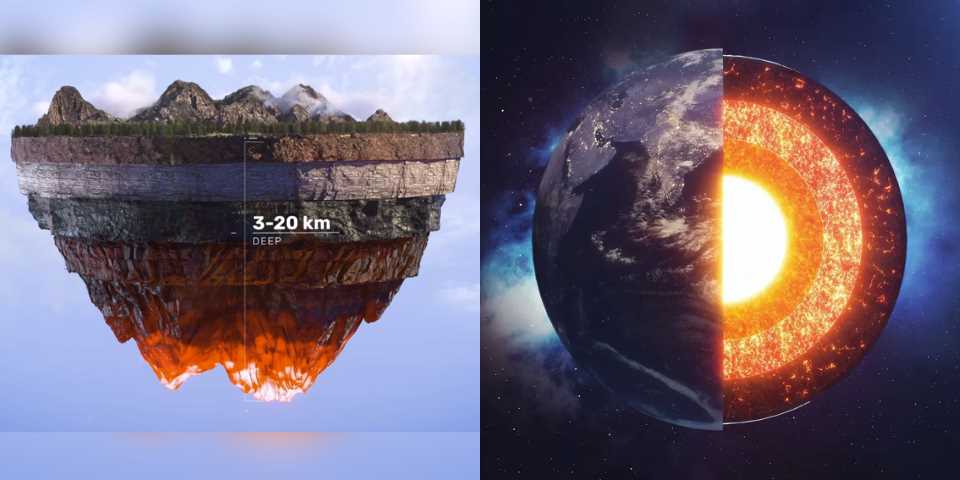
Xenoliths are rocks that have been brought to the surface from deep within the Earth. Some xenoliths originate from the mantle, providing scientists with samples to study. These samples help in understanding the chemical composition and mineralogy of the mantle.
3. Laboratory Experiments:
Scientists also conduct laboratory experiments to simulate the conditions of the mantle. By subjecting rocks and minerals to high temperatures and pressures, similar to those found in the mantle, researchers can gain insights into the behavior and properties of this layer.
4. Volcanic Eruptions:
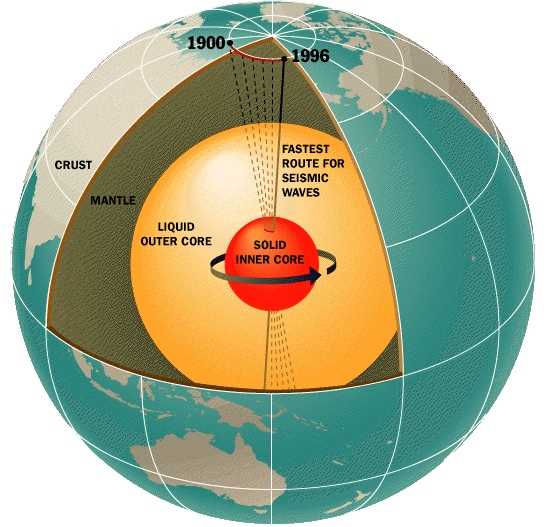
Volcanic eruptions provide another opportunity to study the mantle. When magma rises to the surface, it brings with it material from the mantle. By analyzing the composition of volcanic rocks, scientists can learn more about the chemical makeup of the mantle.
Through these methods, scientists have discovered several secrets about the mantle. For example, they have found that the mantle is composed of solid rock, but it behaves like a viscous fluid over long timescales. They have also identified various layers and regions within the mantle, each with its own unique characteristics.
| Layer | Description |
|---|---|
| Upper Mantle | The uppermost layer of the mantle, extending from the crust-mantle boundary to a depth of about 660 kilometers (410 miles). |
| Transition Zone | A region within the mantle, extending from about 410 kilometers (250 miles) to 660 kilometers (410 miles) in depth. |
| Lower Mantle | The layer below the transition zone, extending from 660 kilometers (410 miles) to about 2,891 kilometers (1,796 miles) in depth. |
| D” Layer | The boundary between the mantle and the core, located at a depth of about 2,891 kilometers (1,796 miles). |
The mantle plays a critical role in Earth’s geology, influencing the movement of tectonic plates, the formation of mountains, and the behavior of volcanic activity. While there is still much to learn about the mantle and its secrets, the ongoing research and advancements in technology are allowing scientists to delve deeper into the mysteries of this crucial layer.
The Core Dilemma: Reaching Earth’s Inner Core
Introduction
The Earth’s core is a fascinating and mysterious part of our planet. Located at the deep center, it consists of two distinct layers: the outer core and the inner core. While scientists have made significant progress in understanding the composition and behavior of the outer core, reaching the inner core remains a significant challenge.
Challenges Posed by Extreme Conditions
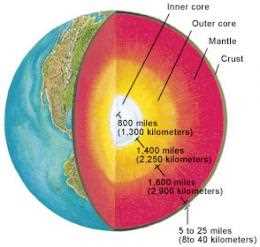
The journey to the inner core would require drilling through thousands of kilometers of solid rock and intense heat. The temperature at the core is estimated to reach over 5700 degrees Celsius (10,000 degrees Fahrenheit), which is hotter than the surface of the Sun. Such extreme conditions make it nearly impossible for conventional drilling techniques to be effective at reaching the inner core.
The pressure in the Earth’s core is also enormous, reaching pressures of about 3.6 million atmospheres. This means that any drilling equipment would need to withstand incredible forces without being crushed or damaged. Developing materials and technologies capable of withstanding such extreme conditions is another significant challenge scientists face in reaching the inner core.
Past Attempts and Current Limitations
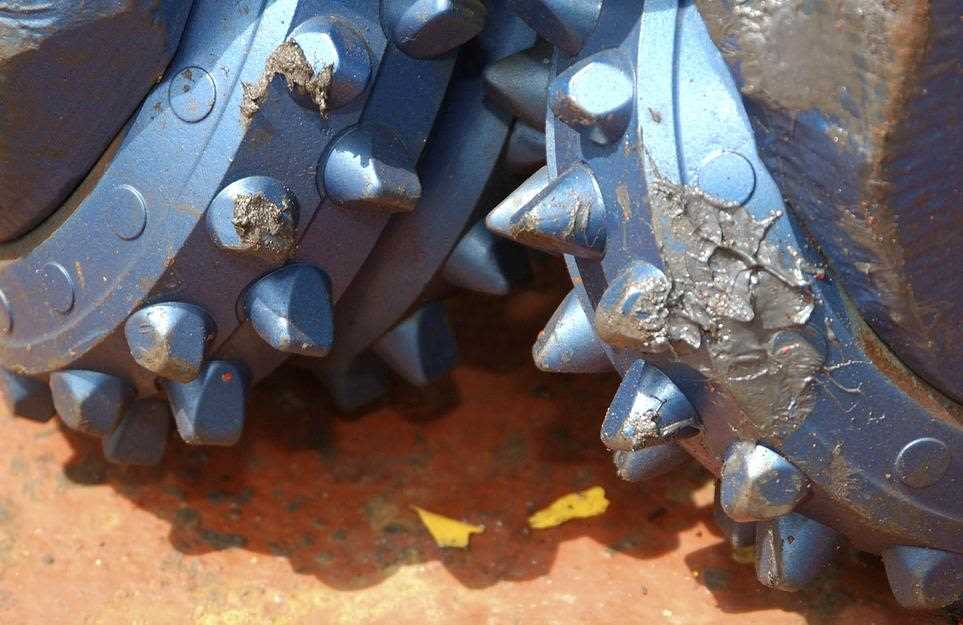
Scientists have attempted to drill deep into the Earth’s crust to study the inner core, but their efforts have been limited to a maximum depth of about 12 kilometers (7.5 miles). Beyond this depth, the heat and pressure become too extreme for existing drilling technologies to handle.
The deepest hole ever drilled, the Kola Superdeep Borehole in Russia, reached a depth of approximately 7.5 miles. This ambitious project took nearly 20 years to complete, and even at this depth, scientists faced challenges due to high temperatures and unexpected rock formations. While the Kola Superdeep Borehole provided valuable scientific insights into the Earth’s crust, it barely scratched the surface in terms of reaching the inner core.
Future Possibilities and Innovative Approaches
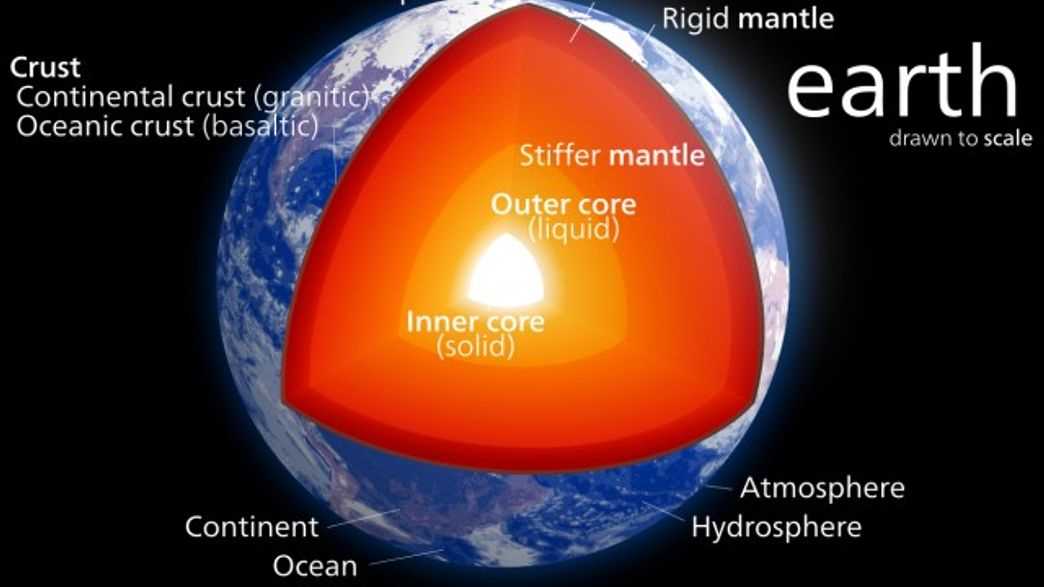
Despite the current limitations, scientists are continually exploring new technologies and techniques that may one day allow us to reach the Earth’s inner core. One such approach is through the use of advanced drilling technologies, such as laser or plasma drills, that are capable of withstanding extreme temperatures and pressures.
Another innovative idea is the concept of using a tunnel-boring machine (TBM) to create a pathway to the core. This approach would involve gradually melting and vaporizing the rock layers using powerful lasers or other heat sources, creating a tunnel that could be reinforced with advanced materials. While this idea is still theoretical, it holds promise for potentially navigating the extreme conditions of the Earth’s core.
Conclusion
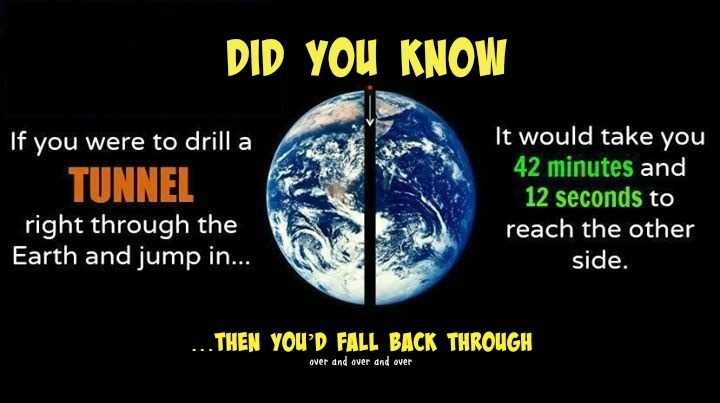
The journey to the Earth’s inner core remains a daunting challenge for scientists. With extreme temperatures and pressures, conventional drilling techniques are not sufficient for such a task. However, through continued research and innovation, there is hope that one day we may be able to reach this mysterious and unexplored region, allowing us to unravel more of the secrets held within our planet.
The Kola Superdeep Borehole: The Deepest Hole on Earth
The Kola Superdeep Borehole, located on the Kola Peninsula in Russia, holds the title for being the deepest hole ever drilled on Earth. The project was a scientific drilling initiative by the Soviet Union in an effort to explore the Earth’s deep subsurface and conduct geological research.
The drilling of the Kola Superdeep Borehole began in 1970 and continued until 1994, reaching a depth of 7.5 miles (12 kilometers). The ambitious project aimed to reach the Earth’s mantle, the layer located beneath the crust, in order to gain a better understanding of the planet’s composition and properties.
Goals and Objectives
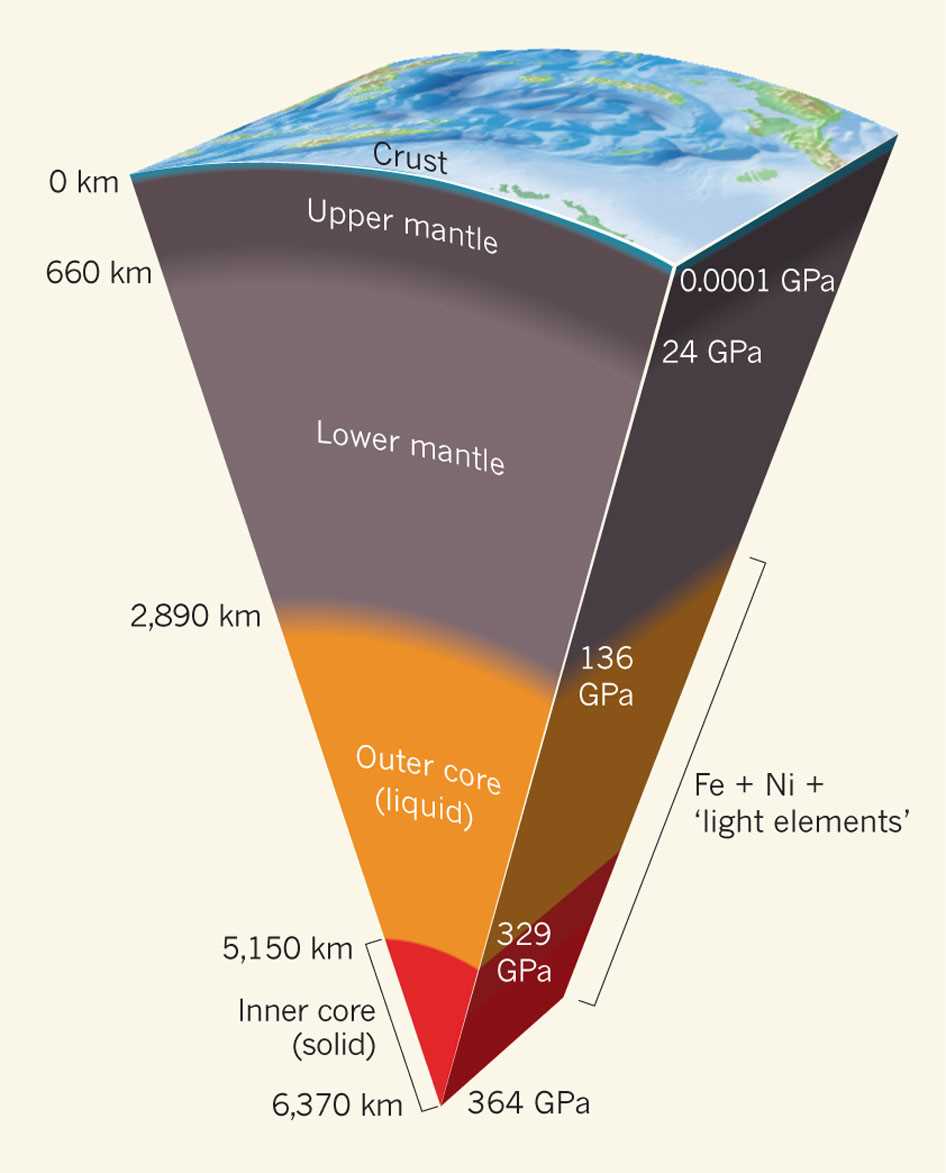
The main objectives of the Kola Superdeep Borehole project were:
- To study the Earth’s crust and gain insights into its composition, structure, and geological history.
- To explore the deeper subsurface layers, including the transition zone between the crust and mantle, to learn more about the Earth’s internal processes and dynamics.
- To obtain geological samples for analysis and study, providing valuable information about the Earth’s history and evolution.
- To advance scientific knowledge in fields such as geology, geophysics, and geochemistry.
The Challenges of Deep Drilling
Drilling to such extreme depths presented numerous challenges and technical difficulties. Some of the major obstacles encountered during the project included:
- High temperatures: As drilling went deeper, temperatures increased significantly due to the Earth’s geothermal gradient. At the bottom of the borehole, temperatures exceeded 570 degrees Fahrenheit (300 degrees Celsius), which made drilling and equipment operation extremely challenging.
- Extreme pressures: Deep drilling operations encountered immense pressures from the surrounding rock formations. Specialized drilling techniques and equipment were required to withstand these pressures and prevent the borehole from collapsing.
- Rock formations: The geology of the region presented complex rock formations that required careful selection of drilling locations and constant adjustment of drilling techniques. Unstable formations and unexpected geological features posed additional challenges.
- Equipment limitations: Drilling to such depths required the development of specialized equipment and drilling techniques. High-pressure drilling muds, diamond drill bits, and advanced drilling technologies were used to overcome the limitations of conventional drilling equipment.
Scientific Discoveries and Legacy
The Kola Superdeep Borehole project yielded a wealth of scientific data and discoveries. Researchers obtained valuable geological samples from different depths, providing insights into the Earth’s geological history and evolution. The project also contributed to advancements in deep drilling technologies, as well as our understanding of the Earth’s crust and internal processes.
Although the original goal of reaching the Earth’s mantle was not achieved due to technical limitations, the Kola Superdeep Borehole remains an important milestone in scientific exploration and drilling technology. It serves as a testament to human curiosity and the relentless pursuit of knowledge about our planet.
Challenges of Ultra-Deep Drilling
-
Extreme Temperatures: As drilling goes deeper into the Earth’s core, temperatures increase significantly. At the Earth’s core, temperatures can reach up to 9,000 degrees Fahrenheit (5,000 degrees Celsius). Such extreme temperatures pose a challenge to drilling equipment, as they can cause equipment failure and damage.
-
Pressure: Another challenge in ultra-deep drilling is the immense pressure exerted by the Earth’s layers. As drilling goes deeper, the pressure increases exponentially. The high pressure can cause drilling equipment to fail and can even lead to the collapse of the drill hole. Specialized equipment and engineering techniques are required to withstand and manage these extreme pressures.
-
Rock Instability: Deeper into the Earth’s layers, the rocks become increasingly unstable. They can be more prone to collapse, fracturing, or shifting, which can pose a danger to drilling operations. Specialized drilling techniques and equipment are needed to overcome these challenges and ensure a stable drill hole.
-
Drilling Fluids: In ultra-deep drilling, drilling fluids play a crucial role in lubricating the drilling process, carrying rock cuttings to the surface, and providing stability to the drill hole. However, at extreme depths, traditional drilling fluids may not be effective. Research and development of high-temperature and high-pressure drilling fluids are necessary to overcome this challenge.
-
Cost: Ultra-deep drilling is an expensive endeavor. The challenges mentioned above, including the need for specialized equipment, engineering techniques, and drilling fluids, significantly drive up the cost of drilling operations. Additionally, the risks associated with ultra-deep drilling also contribute to the high costs involved.
Theoretical Limits: Reaching the Earth’s Core
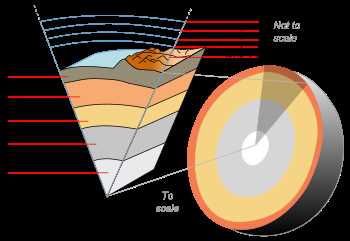
1. The Deepest Hole ever Drilled: Kola Superdeep Borehole
When it comes to drilling into the Earth’s crust, the Kola Superdeep Borehole holds the record for being the deepest hole ever drilled. Located on the Kola Peninsula in Russia, this borehole reached a depth of 7.5 miles (12 kilometers). Although impressive, it is just a tiny fraction of the distance to the Earth’s core, which is approximately 4,000 miles (6,400 kilometers) away.
2. Limits of Drilling Technology
Despite technological advances, drilling beyond the Kola Superdeep Borehole’s record depth is a monumental challenge. As we delve deeper, the temperature and pressure increase significantly, making it increasingly difficult for drilling equipment to withstand these extreme conditions. At depths beyond a certain point, drilling becomes virtually impossible with current technology.
One major hurdle is the temperature at the Earth’s core, which is estimated to be around 10,800 degrees Fahrenheit (6,000 degrees Celsius). This extreme heat would melt any known drilling equipment, rendering it useless. Additionally, the pressure at the core reaches an astounding 3.6 million times the atmosphere’s pressure at sea level, which is far beyond the limits of current drilling technology.
3. Alternative Approaches to Exploration
Given the limitations of drilling technology, alternative approaches are being considered to explore the Earth’s core. One possibility is using seismic waves and other geophysical techniques to study the Earth’s interior. By analyzing the behavior of seismic waves as they pass through the different layers of the Earth, scientists can gain valuable insights into its composition and structure.
Another approach is studying volcanic eruptions and the rocks they bring to the surface. These rocks, known as xenoliths, provide a glimpse into the deep Earth and can help scientists understand the processes occurring at depths beyond our reach.
4. The Journey to the Core: A Hypothetical Scenario
Assuming we could overcome the challenges of extreme heat and pressure, and develop drilling technology to reach the Earth’s core, what would the journey look like?
- The first layers: The first phase of the descent would involve drilling through the Earth’s crust, which is composed of solid rocks and extends approximately 25 miles (40 kilometers) beneath our feet. This layer is relatively cool and rigid.
- The mantle: After reaching the crust, the drilling process would continue through the Earth’s mantle, a layer of hot, semi-fluid rock. The mantle extends for about 1,800 miles (2,900 kilometers) and is where most of the Earth’s mass is concentrated.
- The transition zone: Beyond the mantle lies the transition zone, a region where the pressure and temperature increase dramatically. This zone extends from approximately 250 miles (400 kilometers) to 410 miles (660 kilometers) in depth.
- The outer core: The outer core is a liquid layer composed mainly of molten iron and nickel. It extends from about 1,800 miles (2,900 kilometers) to 3,300 miles (5,300 kilometers) below the Earth’s surface.
- The inner core: Finally, the drilling would reach the inner core, a solid ball of iron and nickel with a radius of about 750 miles (1,200 kilometers). This is the innermost region of the Earth.
Conclusion
Theoretical limits and technological challenges currently prevent us from reaching the Earth’s core through drilling. However, alternative approaches such as seismic analysis and studying volcanic rocks offer valuable insights into the Earth’s interior. As technology advances and our understanding of the Earth improves, perhaps one day we will be able to explore the mysteries of the planet’s core.
Unanswered Questions and Future Prospects
While drilling to the center of the Earth remains a hypothetical scenario, there are still many unanswered questions and potential prospects to consider. Some of the key areas that scientists and researchers are eager to explore include:
1. Temperature and Pressure Conditions
One of the main uncertainties about drilling to the center of the Earth is the extreme temperature and pressure conditions that would be encountered. Current technology is not able to withstand such extreme conditions, and it is unclear how materials could be developed to withstand the intense heat and pressure that exist deep within the Earth.
2. Geophysical and Geological Discoveries
By drilling to the Earth’s center, scientists could gain a better understanding of the Earth’s geophysical and geological processes. This could lead to new insights into plate tectonics, volcanic activity, and the formation of minerals and resources. It could also provide valuable data for predicting earthquakes and other geological events.
3. Core Composition and Earth’s Origin

Reaching the Earth’s core would allow scientists to directly study its composition and potentially solve mysteries about the Earth’s origin and early history. By analyzing the core’s elements and isotopes, researchers could gain insights into the formation of our planet and the processes that have shaped it over billions of years.
4. Potential Energy Resources
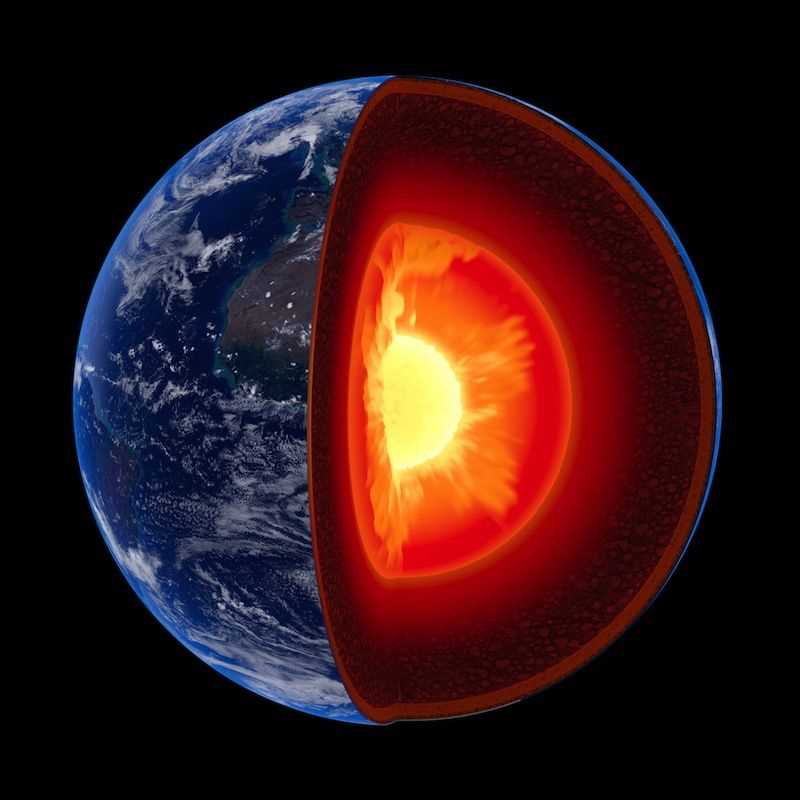
Exploring the depths of the Earth could also provide valuable information about potential energy resources. While current understanding suggests that the core is primarily composed of iron and nickel, there may be other elements or compounds present that could be harnessed as alternative energy sources.
5. Technological Advances
While drilling to the Earth’s core is currently beyond the capabilities of existing technology, the pursuit of this endeavor could drive advancements in materials science, engineering, and drilling technology. The development of new materials and drilling techniques could have far-reaching applications beyond the realm of deep drilling, benefitting industries such as construction, mining, and energy extraction.
6. Environmental and Ethical Considerations
Drilling to the center of the Earth would also raise important environmental and ethical considerations. The potential impact on the Earth’s ecosystems, including potential harm to underground aquifers and seismic activity, would need to be thoroughly studied and mitigated. Additionally, ethical questions would arise regarding the prioritization of resources and the potential disturbance to Earth’s delicate balance.
While drilling to the Earth’s center remains a distant prospect, the unanswered questions and future prospects of such an undertaking highlight the vast possibilities for expanding our understanding of our planet and pushing the limits of human exploration.
FAQ:
What is the depth of the Earth’s crust?
The depth of the Earth’s crust varies from about 5 kilometers under the oceans to about 70 kilometers in some mountainous regions.
How deep would you have to drill to reach the center of the Earth?
To reach the center of the Earth, you would need to drill approximately 6,371 kilometers. This is the approximate radius of the Earth.
What are some challenges of drilling to the Earth’s core?
There are several challenges to drilling to the Earth’s core. One challenge is the extreme heat and pressure as you go deeper into the Earth. Another challenge is the increasing density of the materials you encounter. Additionally, drilling such a long distance would require advanced drilling technology and equipment.
Is it possible to reach the center of the Earth?
Currently, it is not possible to reach the center of the Earth. The deepest hole ever drilled is the Kola Superdeep Borehole in Russia, which reached a depth of 7.5 miles (12 kilometers). To reach the center of the Earth, we would need to drill much deeper than this. The technology and resources required to achieve this are currently beyond our capabilities.
What would happen if we could drill to the center of the Earth?
If we could somehow drill to the center of the Earth, we would encounter extreme heat and pressure. The temperature at the Earth’s core is estimated to be over 5,000 degrees Celsius (9,000 degrees Fahrenheit), which is hotter than the surface of the sun. The pressure at the core would also be immense, estimated to be about 3.6 million atmospheres. It is likely that any drilling equipment would not survive these extreme conditions.
Are there any benefits of drilling to the Earth’s core?
While drilling to the Earth’s core is currently not feasible, it could provide valuable scientific information about the Earth’s interior. By studying the materials and conditions at such depths, scientists could learn more about the Earth’s formation and structure. This could potentially lead to a better understanding of geological processes and help us predict natural disasters, such as earthquakes and volcanic eruptions.
Video:







